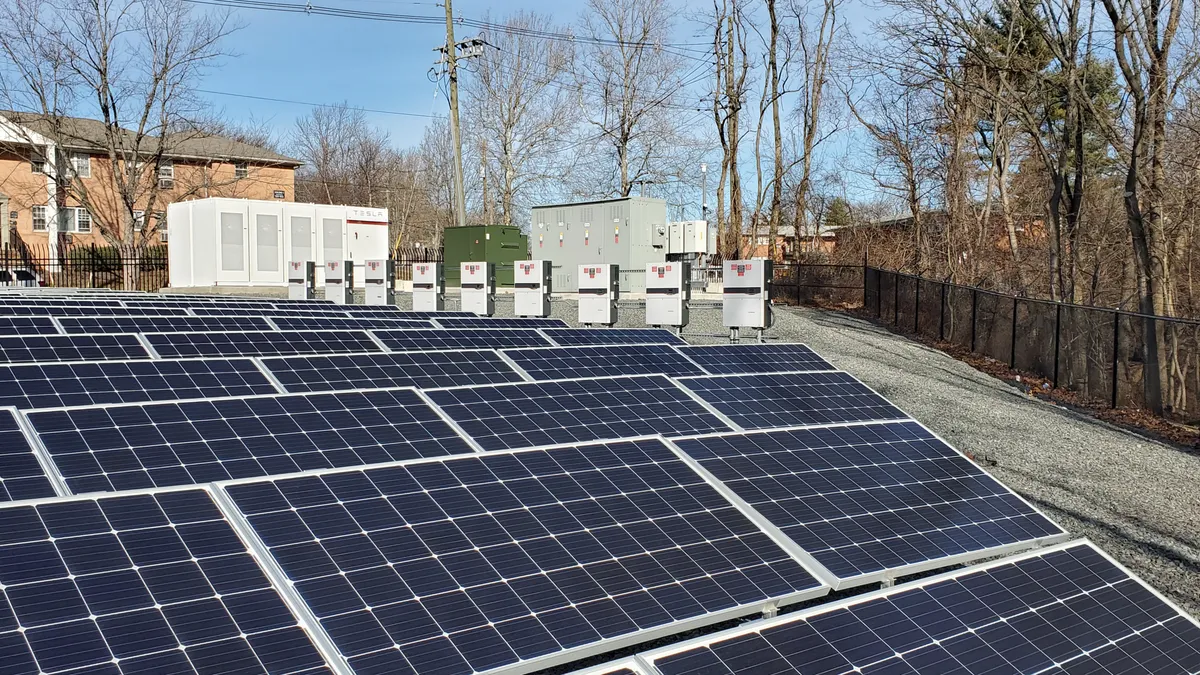Dive Brief:
- Eliminating 95% of carbon emissions from the U.S. energy system will require deployment of 30 GW of new solar capacity each year from now to 2025 and 60 GW per year from 2025 to 2030, according to an analysis out Wednesday from the U.S. Department of Energy.
-
Producing 95% carbon-free electricity is possible without raising electricity prices, according to the report, but removing the final 5% of emissions could increase energy costs by 25%.
-
Michelle Davis, principal analyst on Wood Mackenzie’s solar team, noted in a statement that while she agrees with the study about the need to double and even quadruple solar deployment, actually installing solar at that rate “will be an incredible challenge for this industry, which is already running up against bottlenecks and challenges as it has grown over the last few years.”
Dive Insight:
Drumming up demand for solar won't be the primary challenge that stands in the way of the solar installation goals outlined in Wednesday's report, according to Davis.
The DOE report models a potential path to 95% clean energy by 2035 and 100% by 2050, concluding that the U.S. will have to double its yearly solar installations by 2025 and "ramp up to 60 GWAC per year from 2025 to 2030." Last year, the U.S. installed 15 GW of solar capacity, according to the report.
The report then goes on to tout the benefits of increased solar adoption, including the potential creation of 500,000 to 1.5 million jobs by 2035, increased electrification of buildings and transportation, and decreased water use. It notes some barriers — including the need for careful planning to maintain stability — but dismisses others, saying material supplies and land availability don't necessarily need to constrain deployment.
Davis, however, noted significant barriers on the near horizon. The challenge, she said, is that between supply-side constraints and growing demand, the industry is already struggling to keep pace at 15 GW, never mind 30 GW or 60 GW.
“This is the first quarter that pricing for solar systems increased both year over year and quarter over quarter since 2014,” Davis said.
Davis noted that increased prices for commodities such as steel and aluminum have translated to either higher costs or project delays as developers wait in the hope that supply chains will loosen up and prices will fall. Batteries remain in short supply due to insufficient manufacturing capacity, she said, and project siting remains a challenge.
“Utilities are grappling with how to handle enormous growth in interconnection requests, both for utility-scale and distributed solar projects. This initiates transmission and distribution studies, which can take multiple years. Even once the studies are completed, the costs can be so high that many projects are deemed unviable,” Davis said. “On top of this, additional transmission and distribution capacity will be needed. Historically, new transmission and distribution build-out hasn’t kept up with the pace of renewable energy deployments.”
Davis also said that tariffs on solar modules continue to increase the cost of solar in the U.S.
The release of Wednesday's report coincided with the delivery of a letter to Congress by 750 companies in the solar industry, calling on federal leaders to support “robust investments” in clean energy to increase demand for solar. The letter argued for an extension of the investment tax credit, the addition of a direct-pay provision to the tax credit, and upgrades to accommodate new renewable energy as it is deployed, among other policies.
While financial incentives will help increase solar deployment, Davis said, other federal and state policies will be necessary to accelerate the growth of solar and ensure the U.S. hits the targets outlined in Wednesday's report.













